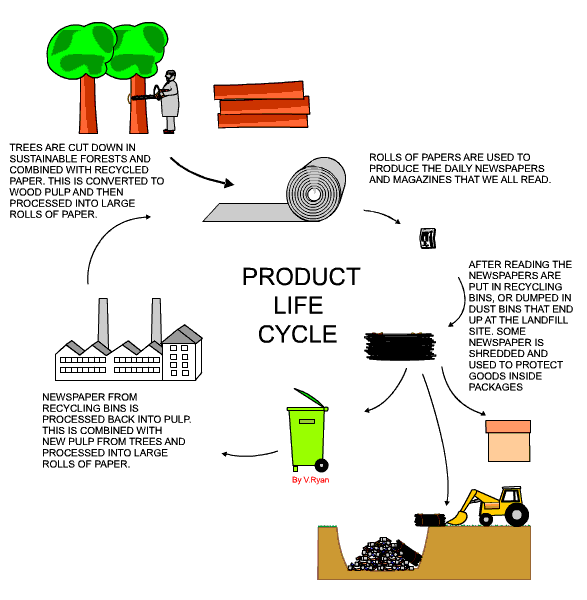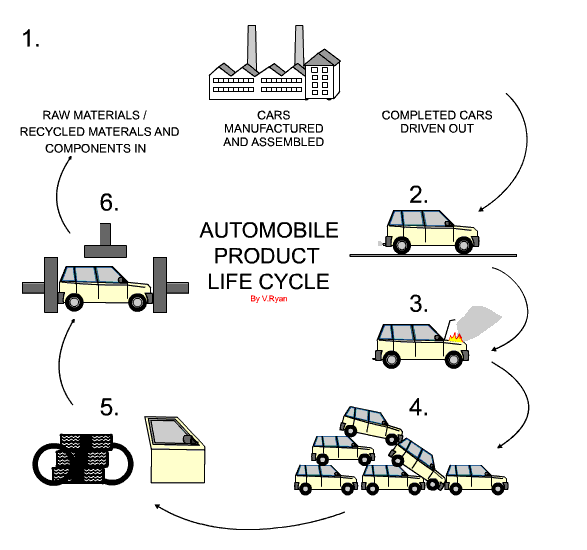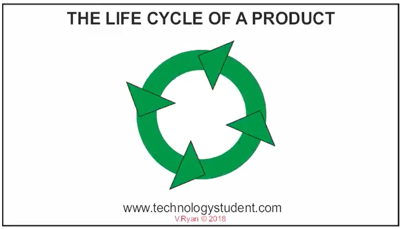| CLICK HERE FOR INDEX PAGE |
| THE LIFE CYCLE OF A PRODUCT |
| V. Ryan © 2007 - 2018 |
| CLICK HERE FOR WORKSHEET / QUESTIONS |
|
When designing and manufacturing a product it is important to consider its life cycle. Life cycle covers the time from its manufacture to its recycling or disposal. A typical product that has a relatively short life cycle is a newspaper / magazine. Everyone reads newspapers / magazines at some point in their lives and many read a newspaper everyday. As the recycling of products becomes more popular it is important that we consider all the products we use, even the humble newspaper, as a valuable resource even after its ‘useful life time’. The life cycle of a simple newspaper is considered below. |
 |
|
It is commonsense to recycle as much reusable material as possible. Products made from recycled materials are usually cheaper than those made from newly processed materials. Recycling products is good for the environment and means that we are using less of the worlds resources. |
|
Recycling materials such as steel, copper, brass and other metals reduces pollution caused by the processing of new metals and it saves energy. It also means that the worlds valuable and irreplaceable materials will last longer. For example, it is estimated that in forty years the worlds reserves of copper ore will have run out. Copper is vital in much of the electrical equipment we use. Recycling used and discarded copper will extent the length of time copper is available. It will allow technologists time to find alternative materials capable of replacing copper. |
|
Choose one of the products below or a different product and explain its life cycle by drawing diagrams and adding a few notes. |
 |
|
EXAMPLE - FAMILY CAR PRODUCT LIFE CYCLE |
 |
|
1. The car is manufactured at a production plant. Raw materials, recycled materials and components enter the factory at one end of the enormous building. Completed cars are driven out of the opposite end and transported to their owners.
|
| CLICK HERE FOR PRODUCT DESIGN INDEX PAGE |
